5 Ways Print Ads Will Boost Your Marketing Strategy

When it comes to advertising, print ads continue to be a powerful weapon for marketers to reach out to the audience. Including them in your marketing plan, along with digital ads, can increase the overall effectiveness of any campaign.
What Are Print Ads?
Print advertising is the purest form of advertising. It uses various physically printed media types to market a product or service to the audience at a large scale. You can use print ads to spread the word about a brand through multiple static visual formats.
Some of the commonly used channels for print advertising include newspapers, brochures, direct mail, billboards, and magazines. Sometimes, advertisers may also use business cards, stickers, and product packaging labels to communicate the message.
Here are five ways in which print ads can benefit your marketing plan:
1. You Can Leverage Them to Woo the Local Audience
The biggest advantage of print ads is that they help you target local audiences right where they are.
You can enclose flyers or mailers or place ads in newspapers that get delivered directly to your audience, and capitalize on the existing audience base of the newspaper. This saves you from putting in additional effort to attract an audience, as the groundwork is already done. In this scenario, your job is restricted to simply tapping into the audience.
In contrast, relying solely on digital marketing campaigns means you have cast a wider net to target an inattentive audience and wait for the appropriate ones to respond to your advertising.
Additionally, when you place print ads in newspapers or magazines that readers love and subscribe to, they are more likely to pay attention to what you have to say, thanks to the publication’s pre-existing trustworthiness. This is also known as the halo effect. Readers feel assured that you are a reliable and legitimate business because the publication is sharing your company’s information.
2. They Can Make Your Business Memorable
Even though digital first is the approach adopted by most businesses these days, print still holds the power to outperform digital channels when it comes to advertising. Studies show that the human brain is more receptive to information that is presented in print. It has also been proven that print ads can generate stronger emotional responses than their digital counterparts.
In fact, the physical act of looking at something, such as a brochure or postcard, results in better emotional processing and, in turn, can increase the recall value associated with a brand. Since emotional response, recall, and response to call to action are some of the critical parameters used to evaluate the success of an ad, marketers can benefit more by including print ads to engage their customers instead of solely relying on oversaturated digital media.
In other words, if you want your business to stand out from the crowd, the key lies in harnessing the power of print advertising.
3. Print Advertising Is Less Intrusive
Unlike digital advertising, print advertising doesn’t interfere with the reader experience. They don’t have to worry about a pop-up ad appearing in the middle of the page as they scroll through a website. As a business, you won’t have to worry about the audience installing ad-blocking software that can make it challenging for digital ads to grab the desired attention.
Print advertising can stay put and convey the message it wants to without causing any disruption. The audience can come back to read the ad at their convenience, as these ads won’t disappear, as when they exit a website or swipe through a social media post. One need not hit the play button or scroll to understand the messaging of the ad.
You can choose where to place your ads to boost visibility. Print media has a wide range of options, such as placing ads of different sizes, placing them in various regional editions, or even bringing out special advertising supplements. You can get as creative as you want, depending on your space, without becoming a nuisance for the audience.
4. The Ads Convert Better
Print ads continue to be far superior at converting than digital ads since there is more focus and less distraction. Digital ads always risk slipping through the cracks as the target audience is pulled into too many directions.
Highly personalized and targeted mail campaigns can better connect with the audience, eliciting more responses. In fact, a survey shows that while 79 percent of consumers take the desired action based on direct mail ads, it plummets to 45 percent in the case of email campaigns. An earlier study also demonstrated that 45 percent of consumers prefer getting advertising mail that is personally addressed to them, and at least 46 percent of the audience pays attention to them.
To put it differently, the flexibility for enhanced personalization is one of the critical reasons print advertising converts better than other forms of messaging.
5. Print Advertising Lasts Longer
Your print ad will survive as long as the magazine or newspaper where you have placed it survives. If the print medium is made accessible to a larger chunk of the audience, such as by placing the magazine in the reception of an office or waiting room of a doctor’s clinic, the number of people reached can be massive. And since viewers tend to pay more attention to the ad’s content in print, they are more likely to be impacted by its message.
Compare this with digital ads that only only appear until you stop paying for them to appear. When your digital ad campaign ends, your ads no longer appear online, while your print ads will still be actively marketing your company.
A robust print advertising strategy can improve your overall marketing efforts. Print ads offer some unique benefits compared to other modes of marketing available. If you are looking for an agency in San Diego to get effective results from print media marketing, contact InnoVision today. We would be happy to develop a plan suited to achieving your goals.

















